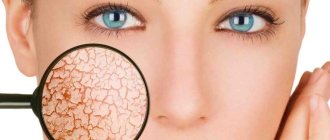Almost all modern women and men are not indifferent to their appearance. Hairstyle is perhaps the main component of the image. Taking care of the thickness of your hair, a person inevitably notices daily losses. How to determine whether the permissible limits are being violated, and what is the normal rate of hair loss?
Factors affecting the amount of hair on the head
There are from 90 to 150 thousand hairs on the head of an adult. Scientists have clearly proven that the number of growing curls and the volume of the hairstyle directly depend on the natural color of the strands.
Blondes are endowed with the largest number of hair follicles - up to 160 thousand hairs can grow on their heads at the same time.
But light strands are always thinner and therefore it seems that the hair of fair-haired people is always smaller compared to red and brown-haired people.
For brunettes and brown-haired people, the average hair count on their head is 110 thousand, their curls are dense, making their hairstyle look voluminous.
Red-haired people are endowed with the smallest number of hair follicles; it is considered normal if there are 60-90 thousand hairs on the head.
Life span of hair
Each hair on the head must go through three periods of its life cycle:
- The first period (anagen) is a period of continuous growth, it lasts from three to seven years. It is due to such a long life cycle that many people manage to grow long curls. Out of a hundred hairs on the head, 80 should be at the growth stage.
- Transitional period (catagen). The hair follicles lose their properties, the hair gradually dies and falls out painlessly.
- Period of rest or regeneration (telogen). In place of the follicles that have completed their work, new cells begin to emerge; this stage takes an average of three months.
How much hair a person will lose daily depends on the color of his strands. The normal amount of hair loss for natural blondes and blondes is considered to be no more than 150 hairs.
With dark hair color, a person can lose 90-110 hairs. Red-haired people lose the least amount of hair – up to 80 hairs.
Statistical data
Renewing the hair on a woman’s head is a continuous process, so it goes almost unnoticed. The constancy of the number of hairs is ensured by the balance between falling out and growing hairs. This process is disrupted if at the stage of hair loss more hairs are lost than new ones appear. The cause of such an imbalance should always be determined by a doctor.
Professionals distinguish 3 phases of the hair renewal process:
- Anagen – growth of strands.
- Catagen - loss.
- Telogen is a resting state.
The normal proportion of hair renewal is 85% to 15% - that is, most of the hair is in constant active growth, while only 15% is in an unchanged state. The duration of the resting stage depends on the woman’s health, the quality of hair care and on average ranges from 3 to 5 years.
Methods for determining the amount of hair lost
Easy-to-perform tests will help you understand whether you should worry about seemingly excessive hair loss.
- FIRST METHOD. You must not wash your hair for three days. On the fourth day, hair lost during the night is collected. Then they wash their hair, also collecting all the hairs from the water. After drying, the strands are combed with a wooden comb, and the hairs are folded separately. All hairs collected during the above-described manipulations are counted, and hairs that have fallen out throughout the day are added to them. The total number of hairs per day is determined; if it does not exceed normal limits, then there is no reason to panic.
- SECOND METHOD. You don’t wash your hair for five days, then you need to pull the strands growing near your temples. If no more than 5 hairs have separated, then this is normal.
- THIRD METHOD. It does not consist in counting the fallen curls, but in examining the roots. Hairs that fall out naturally should have a whitish thickening at the end - a bulb. If most of the hairs have a dark end, then this indicates pathological fragility.
It has been noticed that those who rarely wash their hair or have long locks complain of greater hair loss.
If you wash your hair every day, the weakened strands will immediately fall out and their loss will not be as noticeable as with infrequent washing.
With long hair, the effect of excessive loss of curls is explained precisely by the long hair, since the collected hairs are quite impressive in volume lumps.
Therefore, it is necessary to carry out tests to help understand whether there are signs of incipient alopecia or not.
When should you go to a trichologist?
You should contact a trichologist if you had problems with your hair before the coronavirus and if your hair loss lasted for several months. “If we talk about seasonal hair loss, it does not require special treatment. This is a natural process that regresses on its own. As for post-Covid hair loss, we are trying to stabilize the condition and help patients. It is clear that “acute” hair loss, as a rule, goes away on its own, but this is a huge stress for our hair. Therefore, recovery may take 6–8 months. The doctor will select the appropriate treatment, these could be vitamin complexes, and it is also possible to prescribe mild growth stimulants externally,” notes Vavilov.
What do lost roots say?
Each hair goes through its own individual life cycle, lasting on average about three years. Every month, normally growing curls should add a little more than one centimeter in length.
As soon as the anagen phase comes to its logical conclusion, the hair root weakens and it is pushed out of the bulb.
This is how the natural loss of hair that has completed its life cycle occurs. At the same time, a whitish thickening remains at the end.
The following changes indicate pathological hair loss:
- The fallen hair at the end does not have a white thickening, but simply a dark end.
- Hair falling from the head has the same thickness throughout its entire length. Most often, this indicates increased hair fragility, which may indicate aggressive chemical effects of dyes and curls, fungal and bacterial diseases of the skin.
- A constant and steadily increasing excess of the number of lost curls compared to the norm.
In some cases, people notice that their hair is more durable and does not fall out of their head at all.
This condition is also a pathology and indicates that there is no hair growth, which means that at any point in life the problem of rapid baldness can become acute.
Preventive measures
In order to stop this problem, it is necessary to identify the reason why the hair has become weaker. Visit specialists and carry out all the necessary tests. Only after you have identified and treated the disease that caused the loss of density in your hair, can you grow thick and beautiful curls. You can use some tips:
- Rid your body of unnecessary stress and overwork.
- Get your sleep and eating habits in order.
- Don’t forget that you should drink at least 1.5 liters of clean water throughout the day.
- In winter and summer, it is necessary to use hats. This way you can protect your scalp from the effects of sun and wind.
- Do not overuse styling, coloring or complex hairstyles. You should give your hair a rest.
- Use shampoos and conditioners that are suitable for your hair type. They should not contain silicones, parabens and sulfates.
- The washing procedure should be completed by rinsing with an infusion of burdock or nettle root. These products will help strengthen the bulbs. To prepare the infusion, you need 2 tbsp. Pour boiling water over spoons of burdock powder or dry nettle and let it brew for several hours.
- Rubbing warm burdock or castor oil into the scalp 60 minutes before washing it has a good effect. After time, the oil must be rinsed well. Otherwise, your hair will seem dirty.
- Grate one onion on a fine grater and mix it with two teaspoons of honey and one chicken yolk. Apply this mixture to the entire length of your hair. Wrap your head in a warm towel and leave the mask to absorb for 40 minutes. After time, the mask is washed off with warm water.
- The head should be treated with medicinal lotions and serums that are rubbed into the scalp. At the same time, a massage is performed in order to increase blood flow to the roots. Hair loss is normalized by improving the nutrition of the hair follicles.
- To ensure that not a single hair is damaged by blow-drying, you should first apply thermal protection, use the air cooling function and move the device 20 cm away from your head.
- If you lose a lot of hair while washing your hair, it is best to use boiled water or acidify it with lemon juice. Good effect from washing with mineral still water.
- The comb should have wide teeth. It is strictly forbidden to comb wet hair. First, you need to dry them well.
Remember that it is easier to prevent a problem than to treat it. Take care of the health of your hair to maintain its thickness and beauty for a long time.
There are many ways to combat hair loss at home. The main one is a correct and healthy lifestyle. To prevent this problem you need to:
- Exercise more.
- Eat properly.
- Eat foods high in iron.
- Care with natural oils and medicinal herbs.
How to count correctly
To understand whether you are affected by the problem of excessive hair loss, it is not enough to count all the hairs that have left your head during the day.
The correct calculation result will be provided that several conditions are met:
- The day before the test, you should wash your hair, dry it and comb it.
- Counting starts the next morning.
- Within 3-4 days, all the hairs that leave the head naturally are collected and counted. That is, you need to collect the curls left after a night's sleep on the bed, pajamas, and collect the strands from the comb after each combing.
- The entire number of hairs that fell out during the experiment is summed up and divided by the number of days in which the calculations were made.
The resulting result should be slightly less than the accepted average statistical norm. To ensure the reliability of the calculations, the experiment should be carried out again after two weeks.
When conducting the test, several important conditions must be met. For combing, use only a comb made from natural materials.
You cannot do coloring or use drying or curling devices at this time.
It is not recommended to create hairstyles using tight elastic bands and hair clips. Mechanical trauma and chemical exposure increase the weakening of the follicles and increase the fragility of the strands, which also affects the obtaining of unreliable results.
When counting hair, you need to pay attention to its root. If it is white and thickened, then there is no cause for concern.
But if most of the curls do not have this thickening, then you should contact a trichologist, even if the loss of strands does not go beyond normal limits.
Normal hair loss
All norms are average statistical indicators that can deviate in one direction or another not only as a result of pathological changes within the body, but also under the influence of natural factors.
Hair loss rates per day.
A person should not lose more than 150 hairs per day. Naturally, there are days when the loss of curls is not noticeable at all, and there are periods when it seems that the hair on your head is becoming smaller every day.
When washing your hair.
During the process of washing your hair, the most hair falls out. It is difficult to say how much is allowed based on the amount of hair that may fall out during the water procedure.
The number when counting hairs in the bathroom can be higher than 100 if the hair has not been washed for more than 2 days, if the curls are very stretched during washing, if the strands were not combed before the procedure.
When combing.
It is believed that no more than 15 hairs should fall out during one combing. If there are many times more of them left on the comb, then you need to eliminate the factors that provoke the problem.
Hair loss intensifies if the strands are matted at the time of combing or the person himself pulls them strongly with a comb.
After childbirth.
During pregnancy, every woman's hormonal levels change. Increasing levels of progesterone and estrogen lead to a variety of changes in the body, including these hormones affecting the hair.
Many expectant mothers noted during pregnancy that their curls became much better - denser, stronger.
During pregnancy, in most cases, strands grow much faster, and hairs hardly fall out.
But the situation changes dramatically within two to three weeks after the baby is born.
Firstly, those hairs that were at rest during pregnancy leave the head.
Secondly, the natural replacement of old hairs with new ones begins. It is considered normal if during the first two to three months a nursing mother loses no more than 500 curls per day.
The figure is, of course, terrifying, but not critical. If a woman does not have any diseases and she receives enough microelements and vitamins, then six months after giving birth, the condition of her hair will improve.
Hair loss can become critical if a woman is exposed to stress, does not get enough sleep, and does not receive enough essential microelements from food.
Excessive hair loss may also indicate low hemoglobin. If a nursing mother sees that her hairstyle is getting worse day by day, then there is no need to put off visiting a dermatologist or trichologist.
In autumn.
Hair loss also depends on what season of the year it is. In the summer and winter months, fewer curls are lost. Greater loss of curls is observed in the autumn and spring months.
The structure and composition of human hair
The human hair follicle consists of a root sheath and a hair follicle. It houses the hair papilla, connected to the capillaries of the circulatory system and delivering nutrients to the hair bulb and root. It consists of connective tissue. The glandular apparatus of the follicle includes the sebaceous and sweat glands, and the whole system is completed by a special muscle that allows the hair to move: rise and fall, as well as a system of nerve endings. The hair itself consists of a root (subcutaneous part) and a shaft (visible or outer part).
Hair structure
Additional Information. It is the muscular system that causes the appearance of “goose bumps” - pimples appear on it due to the fact that the hair rises and stretches the skin.
The substance responsible for continuous hair growth is keratin. This is a fibrillar protein with high hardness and strength; it is based on a number of amino acids. The only other organic protein that is harder than it is chitin.
The composition of human hair can be distinguished:
- keratin – 78%;
- water – 15%;
- lipids – 6%;
- pigment – 1%.
The chemical composition of human hair can change due to many factors that affect its health.
Why doesn't my hair fall out at all?
The constant absence of hair falling out of your head is a good reason to be wary.
Each hair must go through its entire life cycle and hair loss is considered a natural process, after which a new life begins to emerge in place of the old bulb.
If this is not the case temporarily, it means that soon several hundred strands of hair may fall out on your head at once and this will not go unnoticed.
Sometimes hair loss is so intense that it results in noticeable bald spots.
The cause of pathological hair strength can only be determined after examining the body.
Myths about hair
There is a lot of unreliable information about human hair that you shouldn’t trust too much.
Among the most common myths are:
- Hair remaining on the comb is the first sign of hair loss. In fact, this is a natural process that only requires determining whether the daily hair loss rate has been exceeded.
- The use of drugs and various styling products becomes the main reason for the weakening of the follicles. Modern varnishes, gels, mousses and other styling products do not get inside the curls and follicles, and therefore do not affect the growth of strands and their strength. There is only one important nuance - safety has been confirmed only for high-quality products, but there are companies that add harmful substances to hair cosmetics; it is impossible to predict how they will affect the hairstyle.
- Critical hair loss is typical only for men. Yes, indeed, about 96% of older men experience pathological loss of strands, which is especially noticeable in the central part of the head.
There are fewer women with increasing hair loss, about 79%, and their thinning evenly covers the entire head in most cases. - Hair falls out more intensely if you wash your hair every day. In fact, this is not so, shampoos do not have a weakening effect on the roots of curls, and the mechanical effect contributes to the loss of only those hairs that have already completed their life cycle.
- Hair will be less likely to leave your head if you trim it more often and shorter. Some believe that the longer the strands, the heavier they are and the hair follicle simply cannot withstand their weight. In fact, this is just a myth; hair weighs so little that even the longest strands hold on tightly without provoking reasons.
- Folk remedies will help solve the problem of hair loss without visiting a trichologist. In case of excessive hair loss, bald spots and alopecia, it is necessary to determine the main cause of the defect. Depending on the identified changes, the doctor selects a comprehensive treatment, and the use of various masks and rubbing are only auxiliary, but not the main methods of therapy.
- Diets can cause baldness. This myth is only partially true. A low-protein diet with less than 100 kcal per day has a negative effect on hair strength. Frequent repetition of strict mono-diets with the consumption of only one type of product can also provoke the loss of strands.
- Constantly wearing hats is the cause of baldness. Hats and tight baseball caps only lead to increased hair fragility.
- New curls will never appear in place of hair that has fallen out from the roots. The hair follicle is not damaged during natural loss; after a while it will begin to function again.
- Hair cannot change for the worse from cold and sun rays. This is one of the most common and harmful myths. It is low temperatures in winter and ultraviolet radiation in summer that sometimes become one of the main causes of sudden baldness. Therefore, both in winter and in the warm season, walking without a hat is not recommended at any age.
Salon and medical procedures
There are cases when home treatments and remedies against hair loss no longer help. Then there is a reason to turn to professionals. Among salon procedures, the most famous are mesotherapy, plasma therapy and micrografting.
With mesotherapy, minerals, amino acids and vitamins necessary for the health of the hair roots are introduced into the scalp using injections. This procedure not only prevents hair loss, but also stimulates new hair growth and strengthens it. During plasma therapy, platelet mass or plasma is isolated from the patient’s own venous blood and injected into the affected area, which helps to launch the body’s reserves and regeneration. Micrografting is a procedure in which healthy hair is transplanted into problem areas.
Recommendations for preventing hair loss
In most cases, critical hair loss on the scalp can be prevented by following these rules:
- You should wash your hair with water whose temperature is not higher than 36 degrees.
- Shampoo and other care products are selected only taking into account the type of curls you have.
- After water procedures, hair should dry naturally, it should be loose and without a towel.
- It is necessary to use less tight hairstyle holders - elastic bands, hairpins.
- Periodically you need to change the parting location.
- Be sure to wear hats in cold, windy, and hot weather.
- It is better to rinse your curls using water with herbal decoctions.
- Periodically pamper your head with massage sessions using essential oils.
- Nutritious, fortified and moisturizing masks are useful; they should be done in courses up to several times a year.
- It is necessary to constantly strengthen the immune system. Playing sports, walking in the fresh air, and eating natural, fortified foods will help with this.
The problem of partial or complete baldness can affect every person. If you notice signs of excessive hair loss, then you should not postpone a visit to a specialist.
As with any other disease, timely identification of the cause of excessive loss of strands and its elimination will help to avoid the degree of alopecia at which it is unlikely to be possible to restore the natural density of hair. And knowing the norms of hair loss will help you figure it out.











